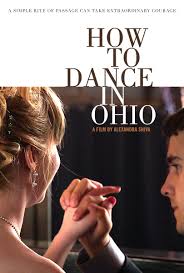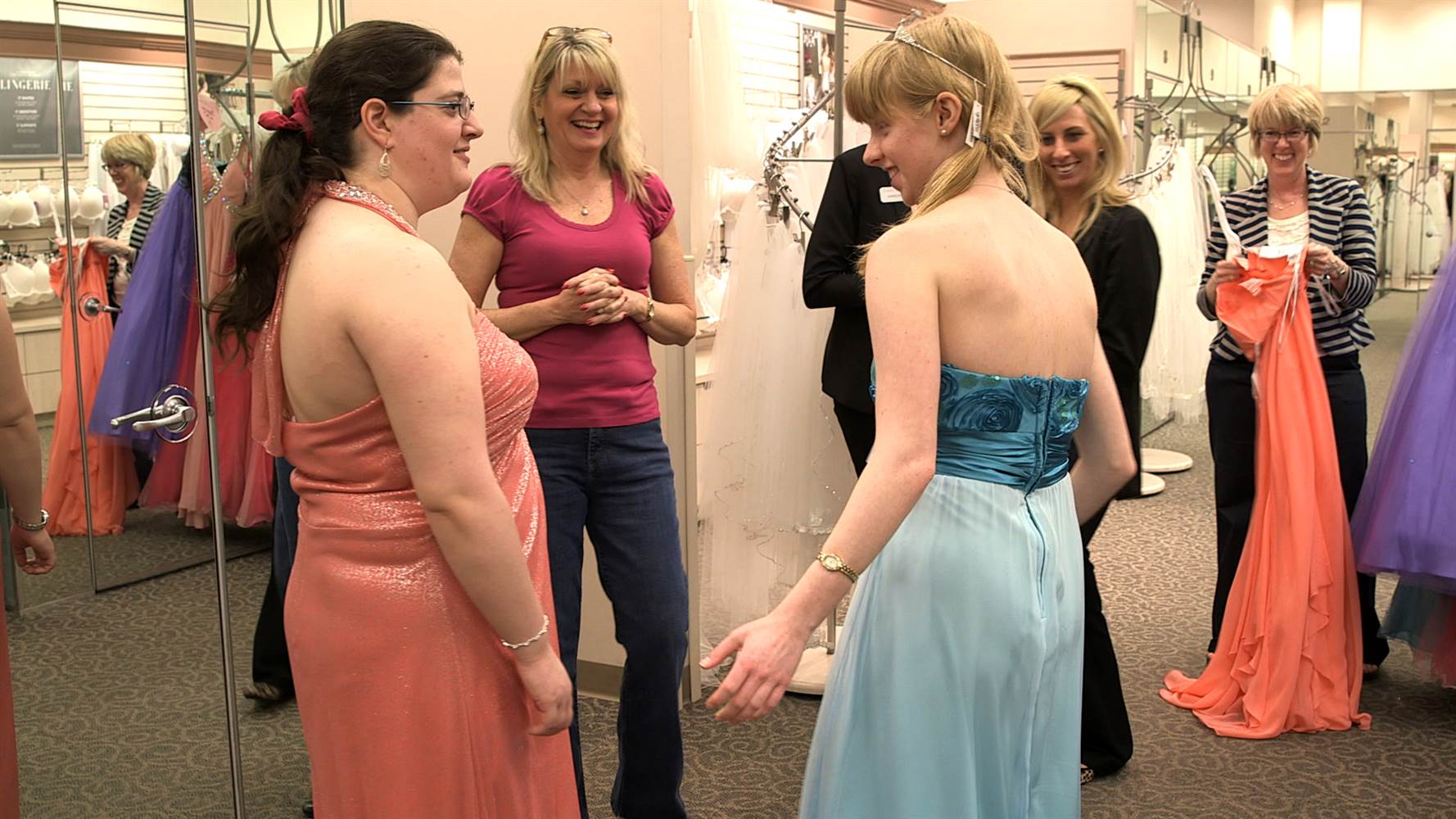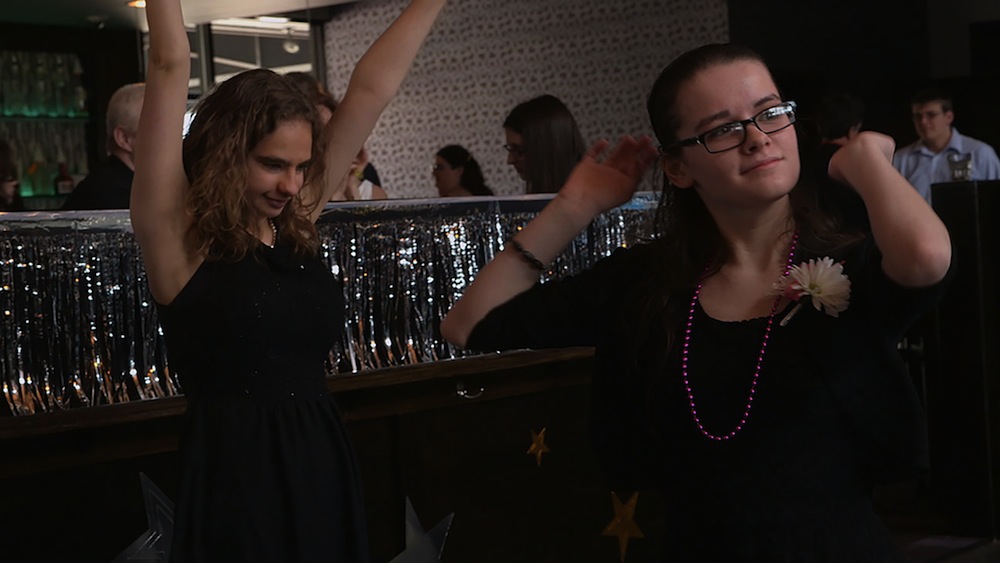A Compassionate Glimpse at Coming of Age on the Autism Spectrum
#32: How to Dance in Ohio (2015)
Director: Alexandra Shiva
Street Date: September 27, 2106/KINO LORBER
 Awareness of Autism is increasing every year, and statistically so is the number of Americans on the Autism spectrum. Earlier this year I reviewed Life, Animated, a personal story of one young man on the spectrum coming of age. In How to Dance in Ohio we’re given insight into the lives of a large group of Columbus, Ohio, ASD (Autism Spectrum Disorder) teens and young adults, all clients of the same counselor, the aptly named Dr. Emilio Amigo. Dr. Amigo stretches his clients social skills through a variety of strategies, but How to Dance in Ohio follows the 12 week preparation for the Amigo Family Counseling Spring Formal. Attending a formal dance is a major milestone for many young adults, but for ASD individuals such an event presents unique challenges. Dr. Amigo gently guides his clients through all of those challenges: from learning how to ask a date (and how to decline), to what to wear, how to make small talk, and of course, how to dance.
Awareness of Autism is increasing every year, and statistically so is the number of Americans on the Autism spectrum. Earlier this year I reviewed Life, Animated, a personal story of one young man on the spectrum coming of age. In How to Dance in Ohio we’re given insight into the lives of a large group of Columbus, Ohio, ASD (Autism Spectrum Disorder) teens and young adults, all clients of the same counselor, the aptly named Dr. Emilio Amigo. Dr. Amigo stretches his clients social skills through a variety of strategies, but How to Dance in Ohio follows the 12 week preparation for the Amigo Family Counseling Spring Formal. Attending a formal dance is a major milestone for many young adults, but for ASD individuals such an event presents unique challenges. Dr. Amigo gently guides his clients through all of those challenges: from learning how to ask a date (and how to decline), to what to wear, how to make small talk, and of course, how to dance.
Alexandra Shiva specializes in documenting people in the margins, and How to Dance in Ohio is a compassionate and empathetic film. Shiva focuses in on three young women: 16 year old Marideth, 19 year old Caroline, and 22 year old Jessica. They each face specific hurdles: Marideth needs printed reminders in the shower to help her wash her hair. Caroline is attending community college, but has difficulty adapting to any changes in her schedule. Jessica is eager to be independent of her parents and has a part time job at a bakery (run by a psychologist), but finds the social niceties of the workplace confusing and emotionally overwhelming.

There’s something almost heroic about young adults working so hard to develop social skills that come easily to most of us.
I thought about those social niceties often as I watched How to Dance in Ohio. I wondered a few times why “we” – those of us not on the Autism spectrum – feel that we need to impose our social norms on people who find many of them meaningless or bewildering. Can’t we just let high functioning ASD individuals be themselves, without forcing them into prescribed molds? How to Dance in Ohio makes clear, though, that ASD people want to connect; in fact, need to connect. The rites and rituals of social engagement may seem unnatural or awkward to Dr. Amigo’s clients, but they long to understand and be understood just like the rest of us. There’s something almost heroic about young adults working so hard to develop social skills that come easily to most of us.
Shiva’s documentary is narratively loosely hung together and could have used a bit more creativity in its structure. But what makes How to Dance in Ohio memorable are the characters themselves, both the young clients and the parents and professionals who surround them. Marideth, Caroline and Jessica are very different from each other: this documentary allows people on the spectrum to be unique and complex, not simply defined by their diagnosis. As for Dr. Amigo, he doesn’t coddle his clients. He is gentle in his manner, but never stops raising the bar for what the ASD young adults can do. The struggle for connection is part of the pay off: as Dr. Amigo says when Jessica tells him she has butterflies in her stomach, “Let’s give it up for butterflies! That means you’re alive!”
 The movie concludes with the long-anticipated Spring Formal, of course. By this point in the documentary viewers know not only Jessica, Caroline and Marideth, but many of their classmates as well. It’s gratifying to see them enjoying themselves – laughing, dancing, crowning the king and queen – in what is a socially demanding setting even for neurotypical people. For Dr. Amigo’s clients, this isn’t simply a dance. It’s a triumph.
The movie concludes with the long-anticipated Spring Formal, of course. By this point in the documentary viewers know not only Jessica, Caroline and Marideth, but many of their classmates as well. It’s gratifying to see them enjoying themselves – laughing, dancing, crowning the king and queen – in what is a socially demanding setting even for neurotypical people. For Dr. Amigo’s clients, this isn’t simply a dance. It’s a triumph.

